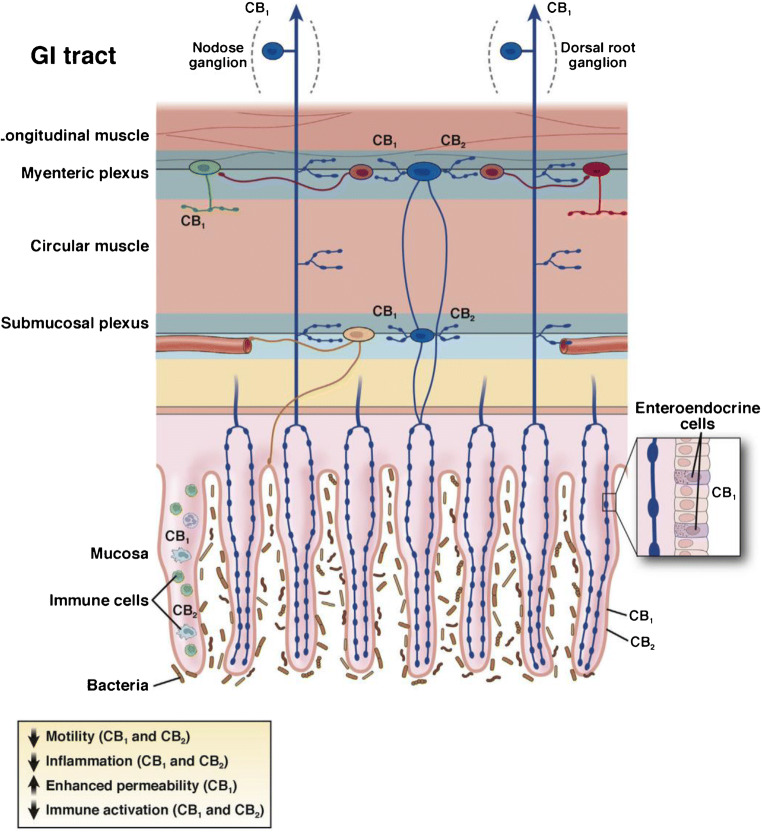Fig. 1.
Effects of cannabinoids in the gastrointestinal (GI) tract are mediated by CB1 and CB2. Cannabinoid receptors are widely distributed in the GI tract. CB1 is expressed by all classes of cholinergic enteric neurons in the myenteric and submucosal plexuses (primary afferent neurons [blue], interneurons [purple], secretomotor [yellow], and excitatory motor neurons [green], but not on inhibitory motor neurons [red]). CB1 is also found on some enteroendocrine cells and in the epithelium. Extrinsic vagal and spinal primary afferent neurons express CB1, which is regulated by feeding (vagal) and stress (spinal), respectively. CB2 is expressed by enteric neurons and immune cells in the GI tract. Under conditions of inflammation and injury, CB2 is upregulated in the epithelium and its function on enteric neurons increases. The effects of activating cannabinoid receptors in the GI tract in animal studies include a reduction in motility, reduced inflammation, and reduced immune activation. Adapted from Sharkey et al. [2•].

